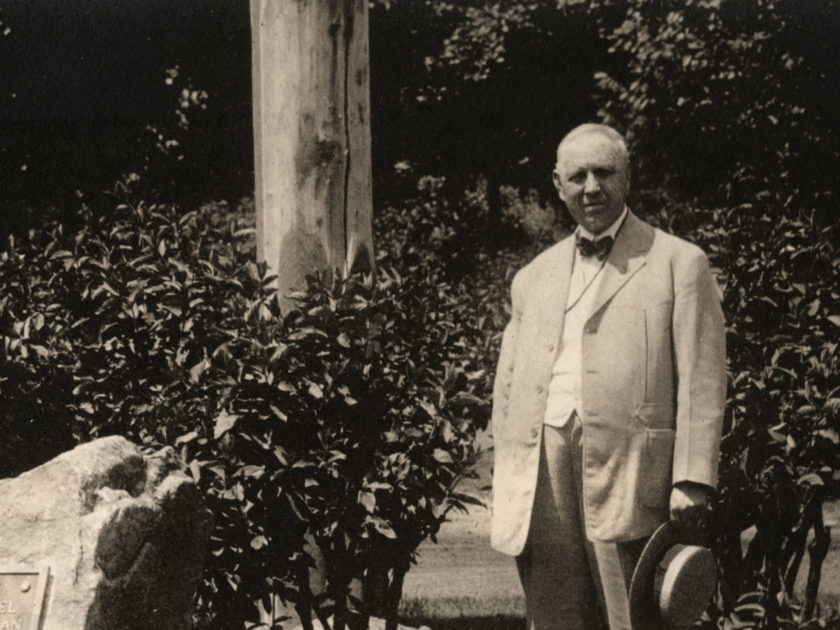By Aaron D. Purcell, with images from the Jeremiah T. Lockwood, Jr. Collection, Special Collections, Virginia Tech
On Aug. 28, 1862, 16-year-old Jeremiah Talcott Lockwood, Jr., from Bedford, N.Y., stepped into the military recruiting office on Franklin Street in New York City. The teenager had been sent by his father to pay an insurance premium. But that day he also found his way into the Union Army.
Lockwood followed in the footsteps of his 21-year-old brother, Benjamin, who had enlisted two weeks earlier. He believed “that it was his duty to fight the battles of his country.”
When Lockwood returned home that afternoon, he informed his parents, Jeremiah, Sr. and Jane, of his enlistment. Though they believed that he was too young and too small, they offered no objections. They gave him a Bible and their cartes de visite so the young Lockwood would always be reminded of home. He left the next week to join his brother in Company A of the 4th New York Heavy Artillery. The regiment, which had formed in late 1861, was headquartered at Fort Ethan Allen near Arlington, Va. He was the youngest member of the company.

Lockwood carried the portraits of his parents throughout the war. Afterwards, they became part of a collection of 23 images he assembled to recall his service. He carefully annotated each photograph. Together, they tell a fascinating story of multi-generational military family who believed in national service, commitment to family, and commemoration of their military contributions. Selected images are included here.
The images remained in private hands until spring 2017, when Special Collections at Virginia Tech acquired the pictures from an online auction. Special Collections has a long tradition of collecting Civil War material for use by scholars, students, faculty and anyone with a research interest. Original diaries, letters, journals, images and papers from Virginia soldiers and their families during the war continue to join the Special Collections through donations and purchases.

Lockwood’s journey follows a familiar path for heavy artilleryman in the complex circle of fortifications that protected the capital. He spent the bulk of his early service in the garrison of Fort Marcy, near McLean in Fairfax County, Va. Then, in March 1864, he and his comrades received orders to join the Army of the Potomac and participate in Lt. Gen. Ulysses S. Grant’s Overland Campaign against Gen. Robert E. Lee’s Army of Northern Virginia.
Lockwood and his comrades participated in the brutal series of engagements at the Wilderness, Spotsylvania, North Anna River and Cold Harbor. By mid-June 1864, the 4th had arrived at Petersburg, and built a line of rifle pits to engage the rebels.
On the night of June 17, the regiment moved under the cover of darkness. By 8 a.m. the next day, several companies had established a defensive position, which attracted shelling and gunfire from the rebels. Union officers, concerned that enemy infantry might advance against them, asked for 10 volunteers from each company to act as an advance skirmish line. Lockwood stepped forward.
Shortly after the volunteers formed, they moved out past a hedge, scaled a fence, and then, with a cheer, charged into a field thick with 3-foot high corn. According to the regimental history, “A murderous fire greeted the advance, but the men who remained unhurt never faltered.”
Lockwood was among those that made it over the fence. But he did not get much further. He “had gone about fifty feet from the fence when he was struck by a ball between the second and third ribs on the right side, the missile passing entirely through the right lung and coming out below the shoulder-blade,” noted the regimental historian. “He was carried back by two comrades.”
Taken from the front lines, Lockwood was transported to the Carver U.S. General Hospital in Washington, D.C. The wound was severe but not fatal. He spent the rest of the war in the hospital recovering.

On Aug. 28, 1865, after three years in the Union Army, his enlistment expired and he received his discharge. His brother Benjamin also survived the war and lived until 1931.
Lockwood returned home and reunited with his parents. He later settled in Katonah, N.Y., where he worked for a furniture company. In the late 1880s, he moved to White Plains, N.Y., and became a successful businessman in the furniture and undertaking business. He held memberships in several civic and business groups.
Lockwood joined his local chapter of the Grand Army of the Republic. He also became active in the regimental veteran’s association, which held its first reunion in 1870. In 1888, the group held its annual reunion in Buffalo, and selected Lockwood as its president. Colleagues introduced Lockwood by saying that he could not talk as loud as the other speakers because of the bullet that had punctured his lung nearly 25 years prior. In the decades that followed, Lockwood attended state and national reunions of Civil War veterans.

In 1916, Lockwood’s son, Richard Carpenter Lockwood, enlisted in the U.S. Army, and joined Company L of the 10th New York Infantry. He participated in the decisive Battle of St. Mihiel in September 1918, and returned safely home in July 1919.
Upon his return, Richard took great interest in his family’s military history. He and his father both joined the Sons of the American Revolution. Their ancestor, Jacob Lockwood, had served as a drummer boy in the 3rd Connecticut Infantry for a few months in 1776. He was present when the regiment marched to New York City to support the Continental Army against the British invasion of Manhattan.
During the early 1920s, Lockwood participated in reunions and traveled to Civil War sites. He died in 1925 at age 81.
Lockwood’s son, Richard, married in 1928, moved to Contra Costa, Calif., and eventually worked for the Shell Oil Company. In 1942, at age 51, he registered for the draft, but was never called to serve in World War II. Richard died in 1956, leaving no children to carry forth the military tradition of his family.

Special note: Adding more visual resources of the Civil War to archival repositories opens up new types of research and adds significant details to existing collections of textual materials. Researchers with an interest in the Jeremiah T. Lockwood Jr. Collection and other Civil War collections held by Special Collection at Virginia Tech should contact the author or the general reference account at specref@vt.edu.
References: Hyland C. Kirk, Heavy Guns and Light: A History of the 4th New York Heavy Artillery; Lockwood Family Collection, Special Collections, Virginia Tech; Biographical Directory of the State of New York, 1900; World War I Veterans’ Service Data and Photographs, New York State Archives, Albany, N.Y.; U.S. Sons of the American Revolution Membership Applications, National Society of the Sons of the American Revolution.
Aaron D. Purcell is professor and director of Special Collections at Virginia Tech. He writes in the fields of archives, libraries and history. Purcell’s most recent book is Digital Library Programs for Libraries and Archives: Developing, Managing, and Sustaining Unique Digital Collections (Neal-Schuman, 2016). He is also editor of The Journal of East Tennessee History.
SPREAD THE WORD: We encourage you to share this story on social media and elsewhere to educate and raise awareness. If you wish to use any image on this page for another purpose, please request permission.
LEARN MORE about Military Images, America’s only magazine dedicated to showcasing, interpreting and preserving Civil War portrait photography.
VISIT OUR STORE to subscribe, renew a subscription, and more.

